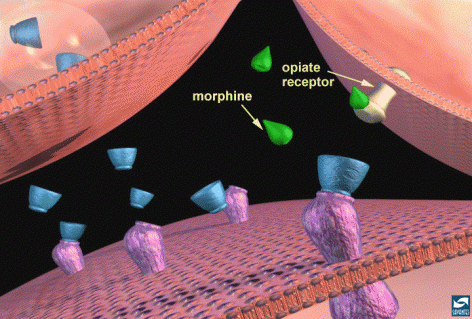The National Institute on Drug Abuse (NIDA) at NIH funded a new study researching the delta opioid receptor (DOR), a pain receptor located under the skin that regulates minor skin sensations like touch and warming. For people with allodynia, a condition where minor sensations can cause severe pain, targeting DORs with medication can reduce pain.
Medications acting on these DORs interfere with the communication between sensory neurons and spinal cord and brain neurons, likely resulting in reduced pain. This might be a promising alternate therapeutic strategy by which opioids can reduce pain without causing side effects such as addiction.
For a copy of the study summary (published online February 27), go to: http://www.cell.com/neuron/abstract/S0896-6273%2814%2900075-0. For information on drug abuse and pain, go to www.drugabuse.gov/news-events/nida-notes/2012/11/qa-dr-david-thomas.
For more information, contact the NIDA press office at media@nida.nih.gov or 301-443-6245.
 This is a close-up view of a synapse in the nucleus accumbens. Three types of neurons participate in opiate action: one that releases dopamine (on the left), a neighboring terminal (on the right) that contains a different neurotransmitter (probably GABA for those who would like to know), and the post-synaptic cell that contains dopamine receptors (in pink). Show that opiates bind to opiate receptors (yellow) on the neighboring terminal and this sends a signal to the dopamine terminal to release more dopamine. [In case someone asks how, one theory is that opiate receptor activation decreases GABA release, which normally inhibits dopamine release, so dopamine release is increased.]
This is a close-up view of a synapse in the nucleus accumbens. Three types of neurons participate in opiate action: one that releases dopamine (on the left), a neighboring terminal (on the right) that contains a different neurotransmitter (probably GABA for those who would like to know), and the post-synaptic cell that contains dopamine receptors (in pink). Show that opiates bind to opiate receptors (yellow) on the neighboring terminal and this sends a signal to the dopamine terminal to release more dopamine. [In case someone asks how, one theory is that opiate receptor activation decreases GABA release, which normally inhibits dopamine release, so dopamine release is increased.]